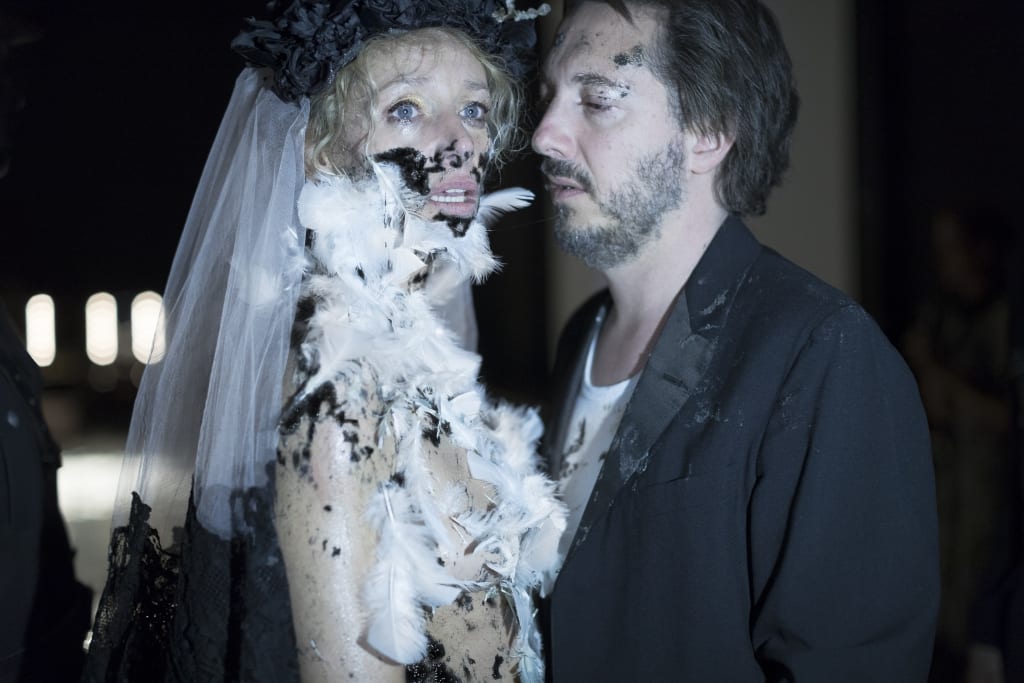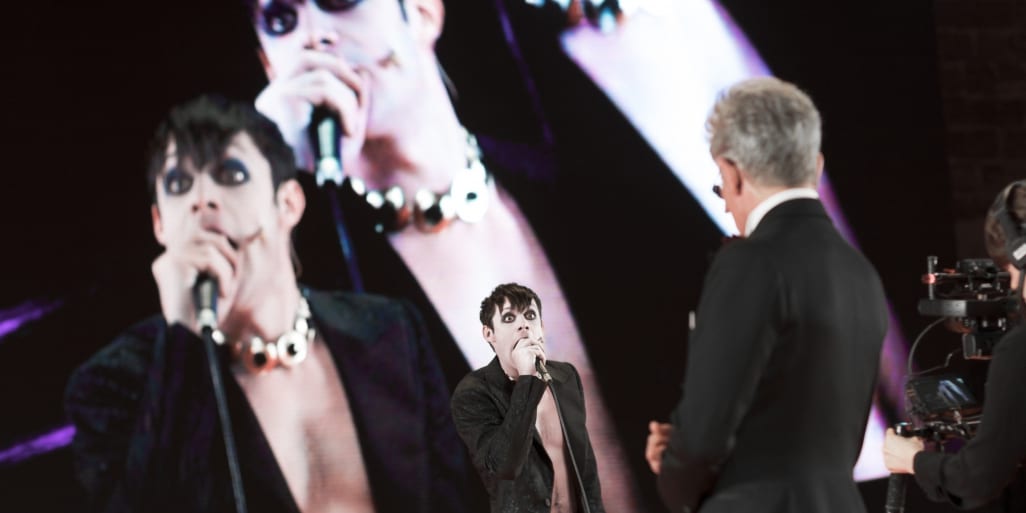Avant-garde director Ivo Van Hove’s take on The Damned is back at La Comédie Française, 3 years after its creation. The Damned is the second script by Visconti that Van Hove chose to direct on stage, after Ludwig. Van Hove insists on the fact that he worked using the script only and not the film, to avoid being influenced by it.
It worked well, and Van Hove’s brutal, cold directing differentiates itself from Visconti’s taste for baroque and ornament. Speaking of ornament, it is in the luxurious, warmly lit Richelieu room of the Comédie Française that the spectators are seated when the lights suddenly turn cold and blinding, and the whole cast arrives on stage. The actors, some of them very well-known and some lesser known, all stand on a bright orange floor like statues facing the public, wearing jeans and t-shirts, with a screen behind them. They suddenly disband all over the stage and change their clothes to get into character, still in sight of the public, and that is how the play starts. From the beginning of the play, with the help of the cameramen filming the actors, the spectator sees what should be out of sight, and is forced to be a sort of voyeur, a witness to terrible fictional actions that shed light on an obscure part of history.

The Damned is set in the nazi era but the Von Essenbeck family’s destiny is very close to the ancient tragedies ones. Their morbid fate is inevitable, and the coffins that are set on stage never cease to remind the spectator that a certain number of characters is going to die during the play. The condemned characters are filmed in close-ups from inside their coffins when locked up inside them, and the spectator cannot avoid those images screened right in the middle of the stage. Everytime a character dies, this ritual starts again and a coffin closes, the spectator constantly wondering who is the next to be buried alive onstage, while the loud sound of guns mixed with Rammstein’s music echoes like a chorus.
At the beginning of Visconti’s film, Martin (Helmut Berger), one of the youngest characters, performs a show as a transvestite parodying Marlene Dietrich and singing “Einen Mann, einen richtigen Mann ”. This scene creates a strong feeling of uneasiness, and puts Martin’s character forward as an ambiguous one. The spectator knows he is going to be important. In the play, Christophe Montenez plays the character of Martin and his show is more violent. He carries a baseball bat, and as he is filmed while on stage, his image is multiplied behind him, somehow announcing the character’s mental struggle and also power to come. Christophe Montenez, recently seen at la Comédie Française in Shakespeare’s Twelfth Night was striking as the eccentric Sir Andrew Aguecheek, but is even more impressive as the perverse Martin. Montenez puts all the other actors in the shade, and makes the spectator freeze when he appears himself as a statue, wearing nothing but the ashes of the members of his character’s family who died during the play.
It seems difficult to properly enjoy The Damned because of its cruelty and its violence, but even more difficult not to be struck by it. Just like the little girls playing hide and seek on stage, I was tempted to hide my eyes with my hands to avoid seeing the symbolic violence inflicted on the bodies. In The Damned, those bodies are either covered in fake blood, tar, feathers, ashes, or nazi uniforms. When they are naked, they seem extremely vulnerable or infinitely powerful. Martin, at the end of the play, is both, and the spectator can only be dumbstruck in front of this cruel, majestic ending.


